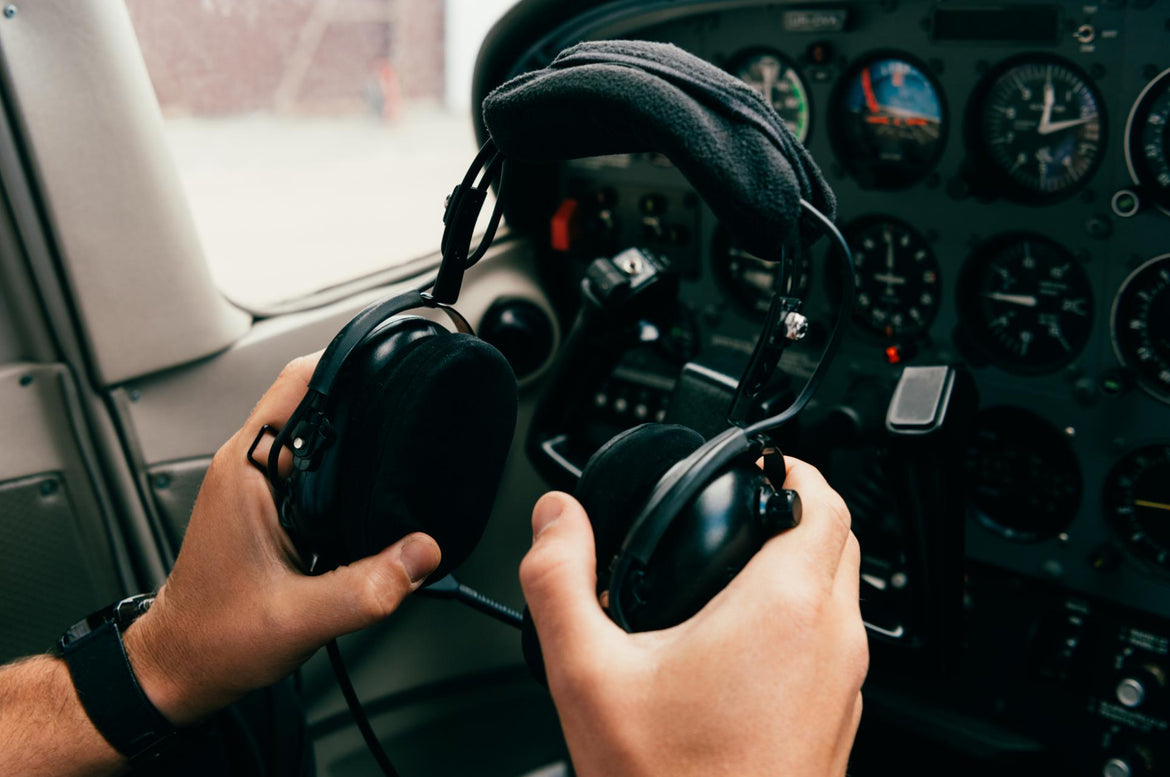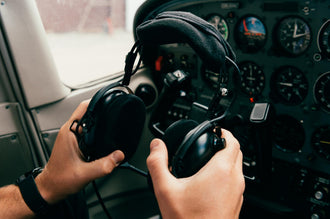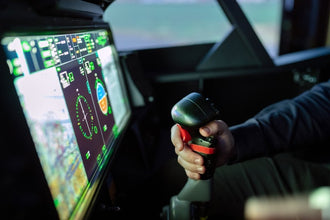
What are aviation headsets?
- 26 Jul, 2022
What are aviation headsets?
When it comes to flying, communication is one of the most important aspects in keeping yourself and others safe. All aviation headsets allow you to communicate via radio with your passengers, other aircraft and ATC. Headsets also have another important function, to protect your hearing. There are many different types of headsets when it comes to hearing protection and not all of them are created equal.
If your cockpit is not particularly noisy, then you can probably get by with a cheaper headset that relies on an older-fashioned passive noise reduction system. This is also known as PNR. A PNR aviation headset uses ear cups with sound-proof insulation in order to block the noise coming from the propellor blades, engine, and general airflow. PNR headsets will reduce cabin noses by 15 to 20 decibels.
For cockpits that require more protection from sound, it’s better to go with an ANR headset. These tend to cost a bit more but are worth it when it comes to protecting your hearing. ANR uses modern technology which cancels ambient cabin noise by utilising opposing soundwaves. While PNR headsets reduce up to 20 decibels, ANR headsets reduce noise by up to 30 decibels making a total noise reduction of up to 50 decibels.
The reason pilots wear aviation headsets is to reduce ambient aircraft noise including the engine, airflow, and propeller blades. If not actively utilising hearing protection in a non-pressurised cockpit, there is a risk of experiencing hearing loss. Furthermore, these aviation headsets are designed to improve communication between people within the aircraft. All types of aviation headsets are designed to enhance radio and intra-cabin communication.
What is the best aviation headset?
As described there are two types of aviation headsets: PNR and ANR.
Traditionally aviation headsets would use Passive Noise Reduction (PNR) to protect the hearing of pilots. PNR headsets mechanically block the soundwaves associated with the aircraft from entering the pilots’ ears. Usually, these PNR headsets have a specialised ear cup that has noise-proofing insulation. The ear cup forms a tight seal around the ear. While PNR headsets are a more cost-effective choice, many pilots prefer headsets that provide digital protection.
Active Noise Reduction (ANR) headsets will have similar basic designs to that of the PNR headsets. However, there are some very important differences to note. ANR headsets will have a specialised microphone on the outside of the ear cups. These microphones will listen to the ambient noise in the aircraft and cancel them digitally by using opposing sound waves.
While you’re shopping for the best aviation headsets, many pilots do prefer the ANR systems. ANR reduces noise by up to 30 decibels while PNR reduces by up to 20 decibels.
How do wireless aviation headsets work?
Bluetooth Headsets
It should not be so surprising that aviation headsets have changed dramatically over the years. They started out as simply speakers on headbands that allowed pilots to hear Air Traffic Control while sitting inside noisy cockpits. These pilots would be shocked and amazed to learn about the ANR technology that's out there today.
Further advancement has been made in the realm of bluetooth and wireless headsets. Bluetooth is a wireless technology that can allow more than one device to communicate with one another. A bluetooth headset will be able to connect to a tablet or phone, which allows applications like ForeFlights and Garmin Pilot to give audio alerts to the aviation headsets.
When Bluetooth was first introduced to aviation headsets, some headsets were able to interact with a phone and play music, and others could only be used for phone calls. Nowadays bluetooth headsets can do both music and phone calls.
Wireless Headsets
Bluetooth headsets however need to be deciphered from wireless headsets. Wireless is relatively new on the market and provides pilots with all the benefits of standard ANR headsets without the cord! These headsets tend to be more expensive and a bit bulkier as they carry a battery with them. Recharge capabilities are generally pretty good with these wireless headsets, most have about a 12-hour battery endurance from full capacity.
You’ll want to make sure you mount the microphone on the opposing ear cup to the charging port to make sure you can charge up the headset without any fuss.
Ultimately the wireless headsets were developed to meet the demand of buyers wanting a wireless model. We live in a world where many think that tethered headsets should be a thing of the past. However, once everything is all plugged into the audio jacks, most pilots would agree that they forget that the wires are there at all. That is until they try to move around the cabin. Wireless headsets make a lot of sense for bigger stand-up cabins where you are more likely to be moving around.
Not sure which aviation headset to buy? Reach out to us and we’d be happy to help!




